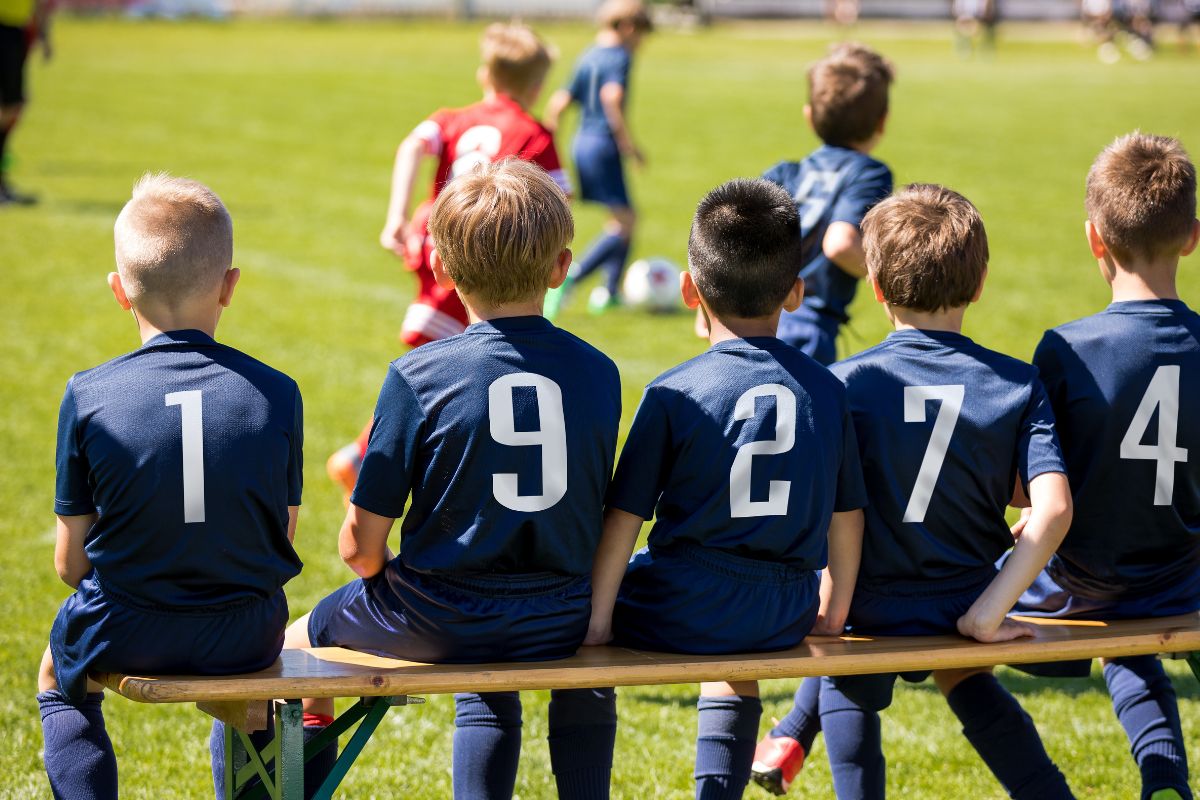Choosing the best sports uniform supplier can make a huge difference in your team’s performance and morale. The right supplier not only provides high-quality, durable uniforms but also offers customization options to suit your team’s unique needs. Finding a supplier that balances quality, customization, and affordability is crucial for any sports team.
Uniforms are more than just clothing—they represent your team’s identity and spirit. A well-designed and comfortable uniform can boost players’ confidence and enhance team cohesion. In addition to the players, coaches and staff also benefit from coordinated attire that promotes a unified appearance.
To help you choose wisely, we’ll explore key factors such as uniform quality, customization options, and additional services that suppliers offer. We’ll also share insights from successful case studies that highlight the impact of a great sports uniform supplier.
Key Takeaways
- Finding a balance between quality, customization, and affordability is crucial.
- Uniforms boost team identity, player confidence, and cohesion.
- Consider additional services and successful case studies when choosing a supplier.
Understanding Sports Uniforms
Sports uniforms play a crucial role in team identity and functionality. Their evolution and varieties highlight their significance in different settings.
History of Sports Uniforms
Sports uniforms have evolved significantly over time. In ancient Greece, athletes competed nude or wore minimal clothing for freedom of movement. By the late 19th century, organized sports saw the introduction of more standardized uniforms. Early football and baseball teams began wearing matching shirts and pants. These uniforms not only provided team identity but also offered some protection.
Over the decades, sport-specific uniforms emerged, each designed to meet the unique demands of the sport. Advances in fabric technology have transformed uniforms into high-performance gear, with modern materials offering improved breathability, moisture-wicking, and durability.
Significance in Team Identity
Uniforms are vital to a team’s identity and branding. They visually represent team unity and can boost morale. Distinct colors and logos make teams easily recognizable, fostering a sense of pride among players and fans. Teams often update their uniforms to reflect changes in branding, commemorate special events, or honor traditions.
In professional sports, uniforms also have commercial value. Many teams have lucrative deals with sports apparel manufacturers to create and market replicas to fans. Merchandise sales can be a significant revenue source for clubs.
Types of Sports Apparel
Sports apparel includes a variety of items tailored to different sports. Football uniforms typically consist of padded gear, jerseys, and cleats. Basketball uniforms are lighter, with sleeveless jerseys and shorts for agility. Soccer kits include lightweight shirts, shorts, and cleats designed for running.
Athletic wear also extends beyond game-day uniforms. There are specialized training gear and warm-up outfits. Innovations in fabric technology have led to the development of compression clothing, which supports muscles and enhances performance. Each sport now has highly specialized apparel designed to optimize performance and comfort.
Understanding the role of sports uniforms in history, team identity, and performance can help in selecting the best supplier for your needs. For a more in-depth discussion on the educational practices for sustainability in sports uniforms, you can explore various scholarly articles.
Evaluating Uniform Quality
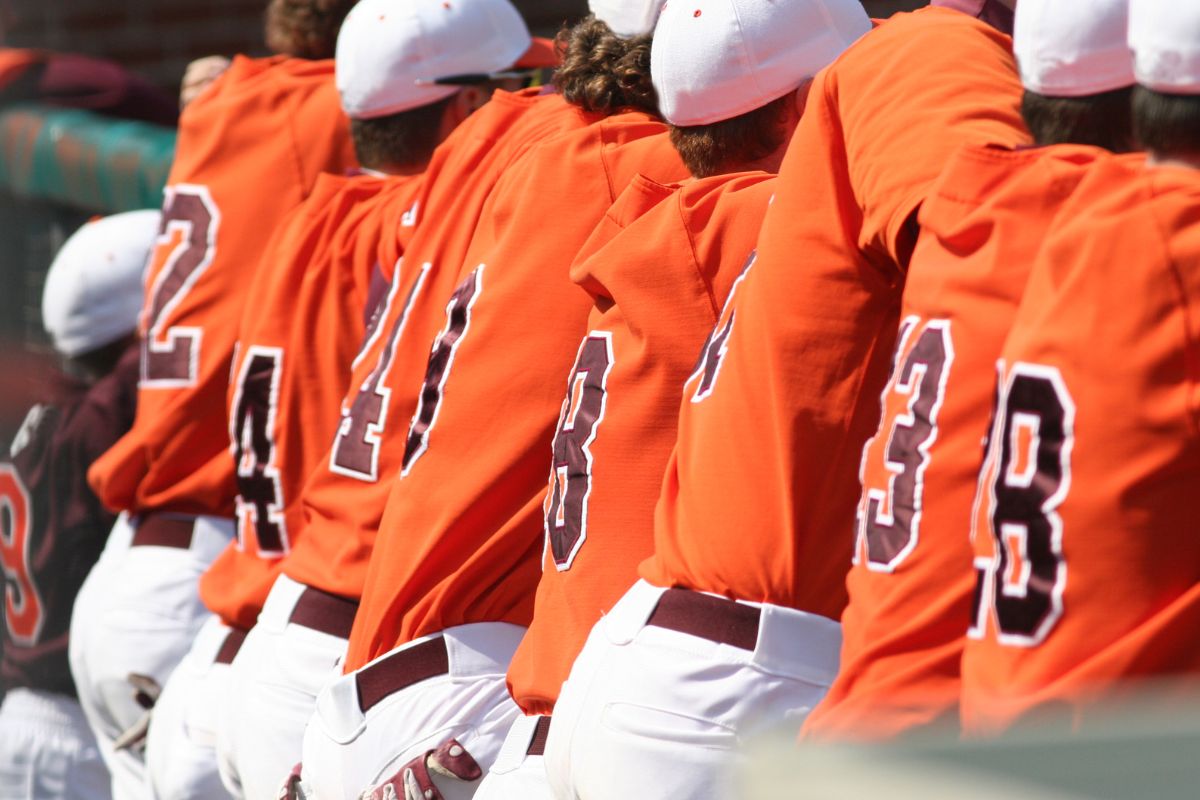
When evaluating sports uniforms, it is essential to consider the materials, durability, and recent advancements in fabrication technology. These factors ensure that the uniforms perform well under various conditions and last longer.
Material and Fabric
The material and fabric form the base of any high-quality sports uniform. Fabrics like polyester and nylon are popular due to their lightweight nature and moisture-wicking properties. These synthetic fibers help keep athletes dry by moving sweat away from the body.
Cotton can be a good choice for breathability but may lack the necessary moisture management for high-intensity sports. Blended fabrics that combine natural and synthetic fibers offer a balanced solution, providing comfort and performance. When selecting uniforms, it is essential to consider the specific needs of the sport and the athletes’ preferences.
The weave and feel of the fabric also play a vital role. Smooth fabrics reduce friction and improve comfort. Mesh panels can enhance ventilation, making uniforms suitable for hot weather. Therefore, ensure the fabric quality aligns with the demands of your sport.
Durability and Performance
Durability is critical to ensuring the uniforms withstand rigorous use over time. Reinforced stitching in high-stress areas like shoulders and seams can prevent tears and maintain the garment’s integrity. Double-stitching and bar-tack stitches are techniques that add strength to these regions.
Performance directly impacts an athlete’s comfort and efficiency. Factors like stretchability and flexibility contribute to better mobility during play. High-performance fabrics are designed to be flexible without compromising strength.
Regular wear and washing can degrade uniforms. Fabrics treated with antimicrobial and anti-odor finishes resist bacteria and bad smells, enhancing longevity. Also, colorfastness ensures that the fabrics maintain their vibrancy after multiple washes, crucial for a professional appearance.
Technology in Fabrication
Technology in uniform fabrication has advanced significantly. Moisture-wicking technology keeps athletes dry, improving performance and comfort. It transports sweat to the fabric’s outer surface where it can evaporate quickly.
Compression technology supports muscles and reduces fatigue. Compression garments are designed to increase blood flow and reduce muscle vibrations, aiding athlete recovery and performance.
Innovative materials like graphene-infused fabrics and nanotechnology have also entered the market, offering enhanced thermoregulation and durability. These advancements ensure that sports uniforms are not only comfortable but also technologically optimized for peak performance.
For more detailed standards on uniform quality, you can explore this article on merchandise procurement problems.
Designing Custom Team Uniforms
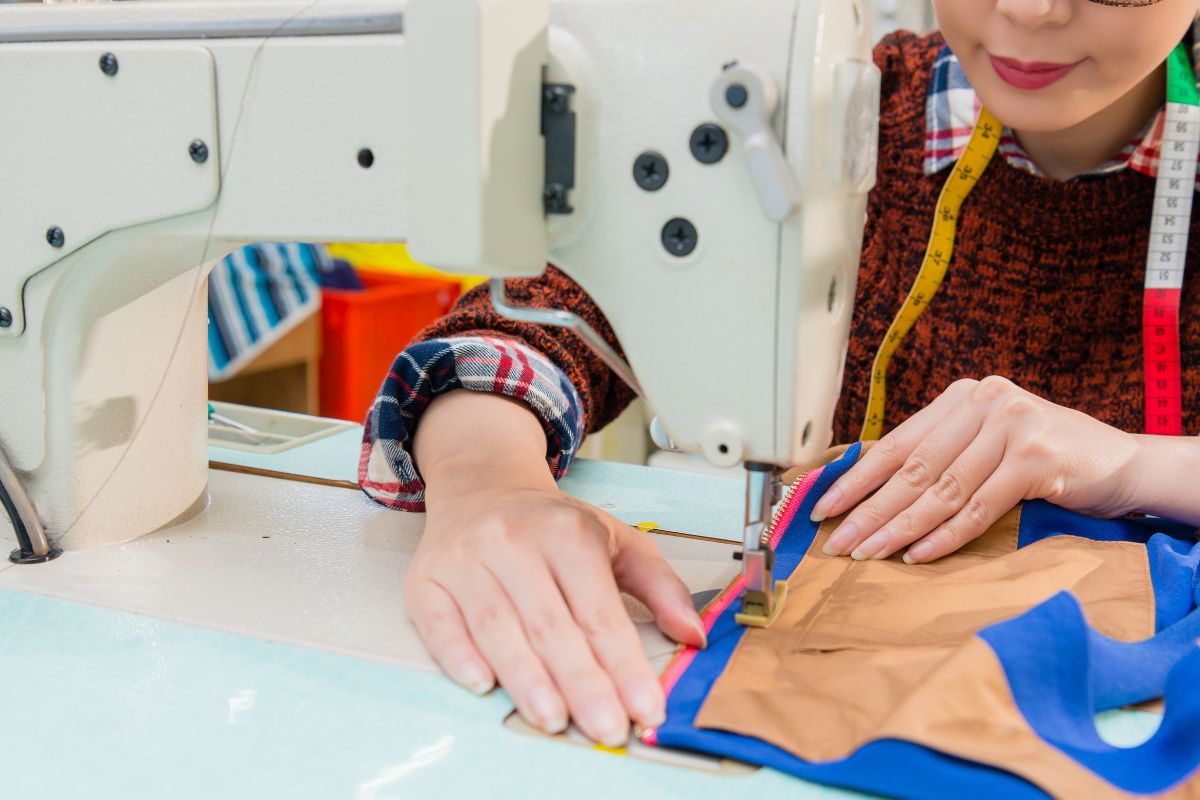
Designing custom team uniforms requires attention to details like personalization, color coordination, and choice of printing method. These elements help create unique, functional, and aesthetically pleasing attire.
Personalization with Names and Numbers
Adding names and numbers to custom team uniforms enhances team identity and individuality. You can choose from different fonts and sizes to fit the jersey’s style. It’s crucial that these are both readable and durable. For instance, player names typically go on the back of the uniform, positioned above the number. Numbers should be large enough to be seen from a distance, ensuring clear visibility during games.
Colors and Styles
The selection of colors and styles is critical to creating cohesive custom team uniforms. Teams often pick colors that represent their brand or school. Contrast between the main color and accents can make the uniforms stand out. Styles may vary from classic looks to more modern, contemporary designs. It’s also vital to consider the material. Fabrics like polyester offer durability and moisture-wicking properties, making them ideal for sports uniforms.
Sublimation Vs. Screen Print Vs. Twill
- Sublimation: This method infuses the ink into the fabric, allowing for vibrant colors and detailed designs. Sublimation ensures that the design doesn’t fade or peel over time, making it a popular choice for custom team uniforms.
- Screen Printing: This traditional method layers ink on top of the fabric. It’s cost-effective for larger orders but can be less durable over time. Screen printing is best for simple designs and solid colors.
- Twill: Twill involves sewing fabric pieces onto the uniform. It’s durable and gives a textured, professional look. Ideal for letters and numbers, twill is often used in high-quality jerseys.
Each method has its advantages and drawbacks, so you should consider your specific needs, budget, and the look you aim to achieve when designing custom uniforms. Adjusting your choice based on these factors will help you create the best custom team uniforms for your team.
Sourcing Sports Uniforms
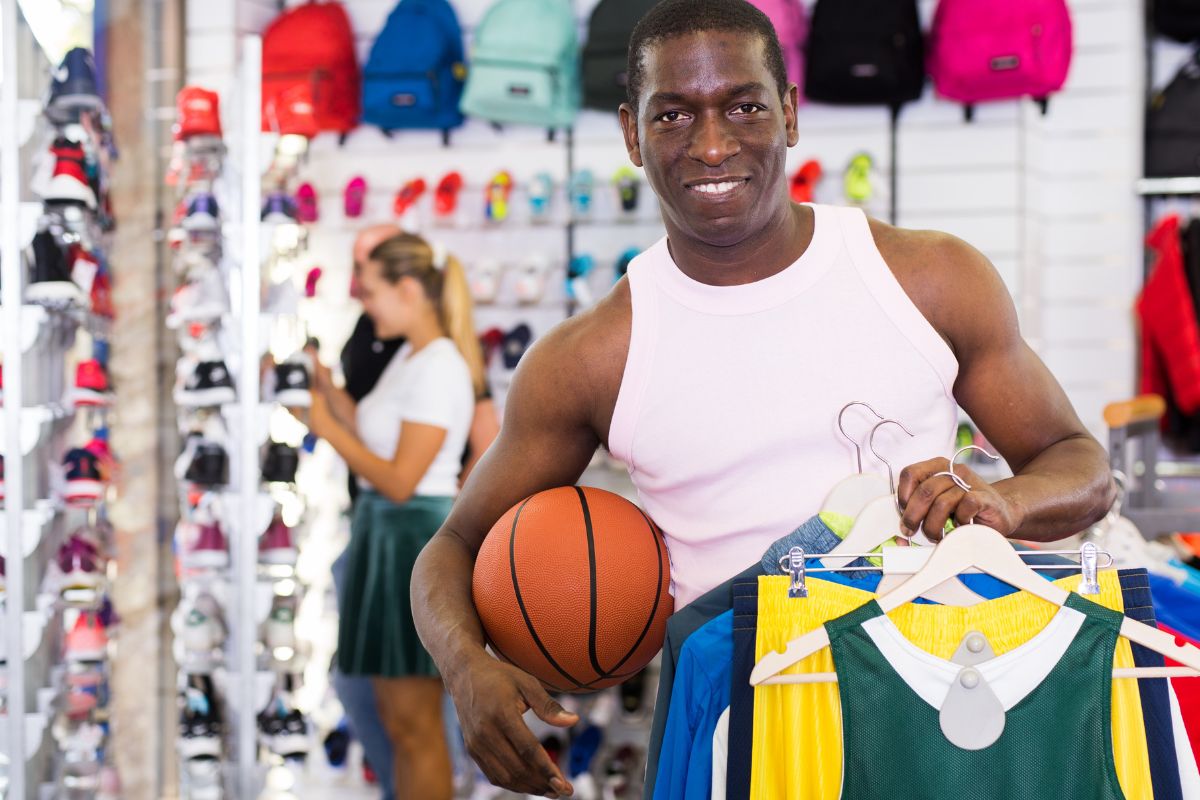
When sourcing sports uniforms, it’s essential to choose the right supplier, decide between a manufacturer and a retail partner, and ensure a quick turnaround. These key factors will help you find the best provider for your team uniforms.
Choosing the Right Supplier
Selecting the right supplier for custom sports uniforms involves evaluating their quality, reliability, and reputation. Look for suppliers with strong customer reviews and testimonials. Ensure they offer a variety of materials suitable for different sports and weather conditions.
Also, consider their customization options. A good supplier should provide options for adding team logos, names, and numbers. Comparing prices and asking for samples can also help you make an informed decision.
Manufacturer Vs. Retail Partner
Deciding between a manufacturer and a retail partner depends on your needs. Manufacturers often offer more customization options and may be more cost-effective for bulk orders. They can create uniforms from scratch according to your specifications.
Retail partners, on the other hand, provide convenience and possibly faster service. They often have pre-made uniforms that can be quickly customized with your team’s branding. Think about your timeline and budget when choosing between these two options.
Importance of Quick Turnaround
A quick turnaround is crucial, especially if you need uniforms in a short time frame. A supplier’s ability to deliver custom sports uniforms quickly can save you from last-minute stress. It’s important to ask suppliers about their production and shipping times.
Some suppliers offer rush services for an additional fee, which can be helpful in urgent situations. Having uniforms on time ensures your team is ready for the season without delays.
By focusing on these factors, you can ensure your team gets high-quality, customized uniforms on time, enhancing their performance and team spirit.
Uniforms for Every Sport
To choose the best sports uniform supplier, it’s essential to consider the specific needs of different sports, the variations in unisex versus gender-specific apparel, and the availability of sizes for both youth and adult athletes.
Uniform Requirements for Different Sports
Each sport has unique uniform needs. Football uniforms require durable, padded jerseys and pants to withstand heavy physical contact. In contrast, soccer uniforms are lightweight and breathable, allowing for maximum mobility.
Baseball and softball uniforms usually consist of button-up jerseys and comfortable pants that allow movement. Basketball uniforms are sleeveless and made from materials that wick away sweat. Volleyball uniforms often include tight-fitting shorts and moisture-wicking tops. Wrestling singlets must be flexible and tight to allow for grappling. Track and cross country uniforms are lightweight and built for speed.
Lacrosse uniforms need to provide both flexibility and protection. Cheerleading uniforms should be stylish yet functional to allow for tumbling and stunts. Golf uniforms often include polos and tailored pants or skirts.
Unisex Options Vs. Gender-Specific Apparel
Unisex sports uniforms are designed to fit both men and women, offering a versatile option for teams. These can be ideal for sports like soccer, basketball, and track, where comfort and fit are essential for performance.
In contrast, gender-specific apparel provides tailored fits that cater to the different body shapes of men and women. For example, cheerleading uniforms often have unique designs for men and women to accommodate different movements and aesthetics. Similarly, women’s volleyball uniforms may offer a more fitted cut compared to men’s versions. This can help in providing better comfort and performance.
Choosing between unisex and gender-specific apparel depends on the sport, team preferences, and the need for uniformity or individuality.
Youth and Adult Sizes
Having a range of sizes for both youth and adult athletes is crucial. Kids playing soccer, baseball, or basketball need uniforms that are designed to fit smaller frames while still providing the same durability and comfort. Wrestling singlets and cross country uniforms for youth should offer flexibility and ease of movement.
For adults, providing a wide range of sizes ensures that athletes of all shapes and sizes can find the right fit. Whether it’s a large football player or a slender volleyball player, uniforms should accommodate different body types. This is especially important in sports like lacrosse and cheerleading, where the fit can influence performance and safety.
Uniform suppliers must cater to these diverse size requirements to meet the needs of all athletes, from kids to adults.
Additional Uniform Components
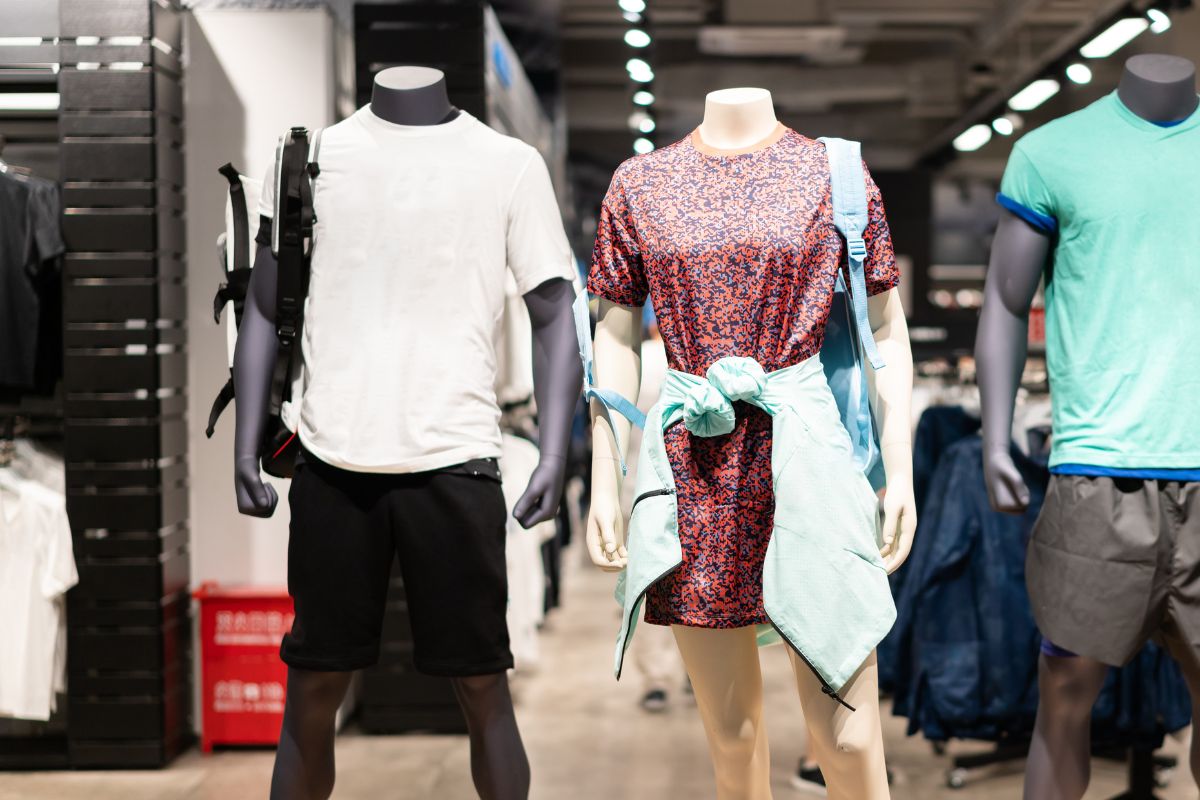
A complete sports uniform includes more than just jerseys and pants. It also consists of essential outerwear, warmups, and various accessories and bags necessary for athletes. Detailed attention to these components enhances performance and team cohesion.
Jerseys and Pants
Jerseys and pants are the core elements of any sports uniform. Jerseys typically feature the team logo, player number, and sometimes player names. They are made from breathable materials to ensure comfort during intense activity. Pants can vary greatly depending on the sport. For instance, football pants are padded for protection, while basketball shorts are lighter and more flexible.
Fit and durability are key. These garments must withstand frequent washing and hard wear. Quality jerseys and pants will maintain their shape and colors even after repeated use. Material choice is crucial: look for moisture-wicking fabrics that help keep athletes dry.
Outerwear and Warmups
Outerwear includes jackets, hoodies, and windbreakers. These are vital for athletes to stay warm during breaks or cold weather. Warmups, like track pants and tops, are essential for pre-game routines to help prevent injuries by keeping muscles warm.
When selecting outerwear, consider insulation and weight. Jackets should be warm yet light enough not to restrict movement. Windbreakers are particularly useful for outdoor sports, providing protection against wind and light rain. For warmups, flexibility and comfort are paramount. Elastic waistbands and cuffs ensure a snug fit that adapts to body movement.
Accessories and Bags
Accessories such as socks, headbands, and wristbands play a role in performance and team uniformity. Bags are essential for carrying gear, uniforms, and personal items. High-quality socks can prevent blisters, while headbands and wristbands help manage sweat during games.
Look for bags that are durable with substantial storage capacity and multiple compartments for better organization. Accessories should be easy to clean and durable. Match the accessories to the team’s colors and styles to maintain a cohesive team appearance.
By paying attention to these additional components, you can significantly enhance the effectiveness and aesthetic appeal of sports uniforms. Focus on quality, comfort, and functional designs to get the best performance out of your team.
Support and Services
When choosing the best sports uniform supplier, the quality of support and services provided is crucial. This includes responsive customer service and comprehensive after-sale support.
Customer Service Excellence
Great customer service sets the best suppliers apart. You should expect clear communication channels like phone, email, and live chat. Quick response times are important.
A supplier that values your time will resolve issues promptly. They should provide detailed information on product availability, shipping times, and order tracking. Providing samples before committing to large orders shows they are confident in their product quality.
Moreover, a good supplier will have knowledgeable staff that understands your needs. Whether you need help with product specifications or placing an order, their guidance can make the process smoother.
After-Sale Support
After-sale support is just as vital. Reliable suppliers offer assistance even after you’ve received your order. This includes handling returns, exchanges, and addressing any defects or quality issues.
A supplier that stands by their products will typically have clear return policies. They should also offer warranties or guarantees on their uniforms.
Additionally, ongoing support might include restocking advice and help with future orders. Providing maintenance tips to ensure long-lasting uniforms shows their commitment to your satisfaction.
Look for suppliers that provide easy access to after-sale services, ensuring that any post-purchase concerns are swiftly addressed.
Uniforms for Coaches and Staff
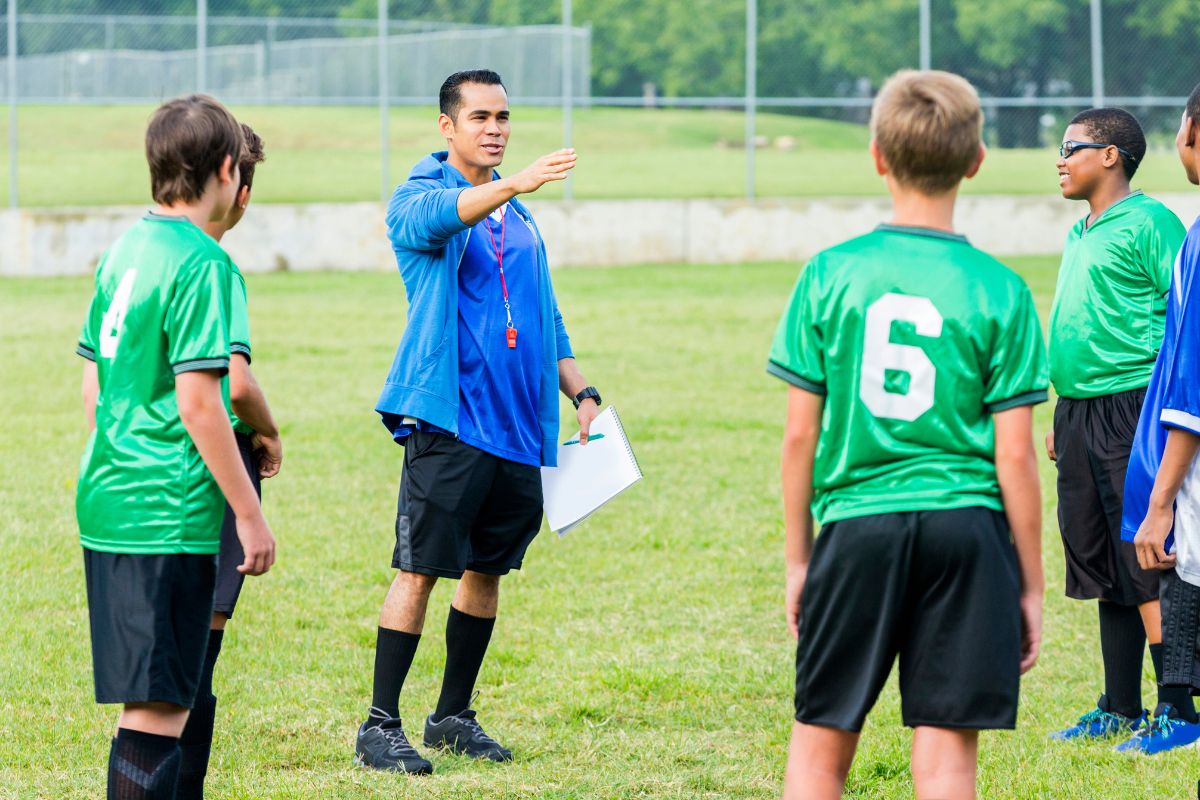
Providing coordinated and functional uniforms for coaches and staff is essential. It ensures a professional appearance and meets the unique needs of team officials.
Coordinated Apparel for Team Officials
Coaches and staff require coordinated apparel to present a unified and professional look. Matching uniforms create a sense of identity and unity among the team. When choosing uniforms, consider using high-quality materials that withstand rigorous use. Breathable fabrics and moisture-wicking technology can keep team officials comfortable during games and practices.
Branding is also crucial. Adding team logos, names, or other identifiers to the uniforms can enhance team spirit. Well-designed apparel reflects positively on the team and leaves a lasting impression on spectators and opponents.
Many suppliers offer a range of styles, including polos, jackets, and track pants. Selecting versatile pieces allows coaches and staff to adapt to various weather conditions and events. Coordinated apparel helps build team pride and maintains a cohesive appearance throughout the season.
Functional Needs and Professional Appearance
Uniforms for coaches and staff must balance functionality with a professional look. Consider the specific roles and activities of team officials when choosing uniform features. Pockets, for example, can provide practical storage for whistles, notepads, or other small items.
Comfort and mobility are key. Look for uniforms that offer a good fit without restricting movement. Stretchable materials and ergonomic designs can help officials perform their duties effectively.
A professional appearance is equally important. Well-fitted and neatly designed uniforms convey a sense of authority and respect. Opt for colors and designs that align with the team’s branding while maintaining a polished look.
Additionally, some suppliers offer customization options, allowing you to tailor uniforms to specific team requirements. This can include choosing specific color schemes, adding names or roles, and selecting materials that best suit the team’s environment.
Pricing and Budget Considerations
When selecting the best sports uniform supplier, evaluating competitive pricing and maximizing value for your organization are crucial. This section provides insights into these key areas to help you make informed decisions.
Competitive Pricing Analysis
Competitive pricing is essential when choosing a sports uniform supplier. Compare prices from multiple suppliers to ensure you receive the best deal. Look at not just the sticker price but also additional costs like shipping and handling fees.
It’s important to understand the market rates for sports uniforms. Suppliers like Amazon and local vendors often have variable pricing depending on the quantity ordered. Bulk orders generally offer significant discounts. Negotiating prices can also lead to better deals, especially if purchasing for a large organization.
Evaluate the overall cost-benefit ratio. Sometimes, paying slightly more can get you higher quality uniforms that last longer. This reduces replacement costs in the long run. Keep an eye out for seasonal discounts and promotions, as these can significantly reduce your expenses.
Maximizing Value for Organizations
Getting the best value means more than just a low price. Consider the quality of the uniforms. High-quality materials can withstand rigorous activities and frequent washing, ensuring they last longer.
Customization options are also vital. Adding team logos or player names can make the uniforms unique and boost team spirit. Suppliers like Nike and Adidas offer extensive customization choices, from colors and designs to materials.
Customer service is another factor. A supplier with a responsive customer service team can handle issues swiftly, ensuring minimal disruption to your activities. Check reviews and testimonials to gauge the reliability of the supplier.
Lastly, consider the supplier’s delivery times. Timely delivery ensures your team has the uniforms when needed, avoiding last-minute hassles. Suppliers that offer tracking for shipments add an extra layer of reliability.
Case Studies: Success Stories
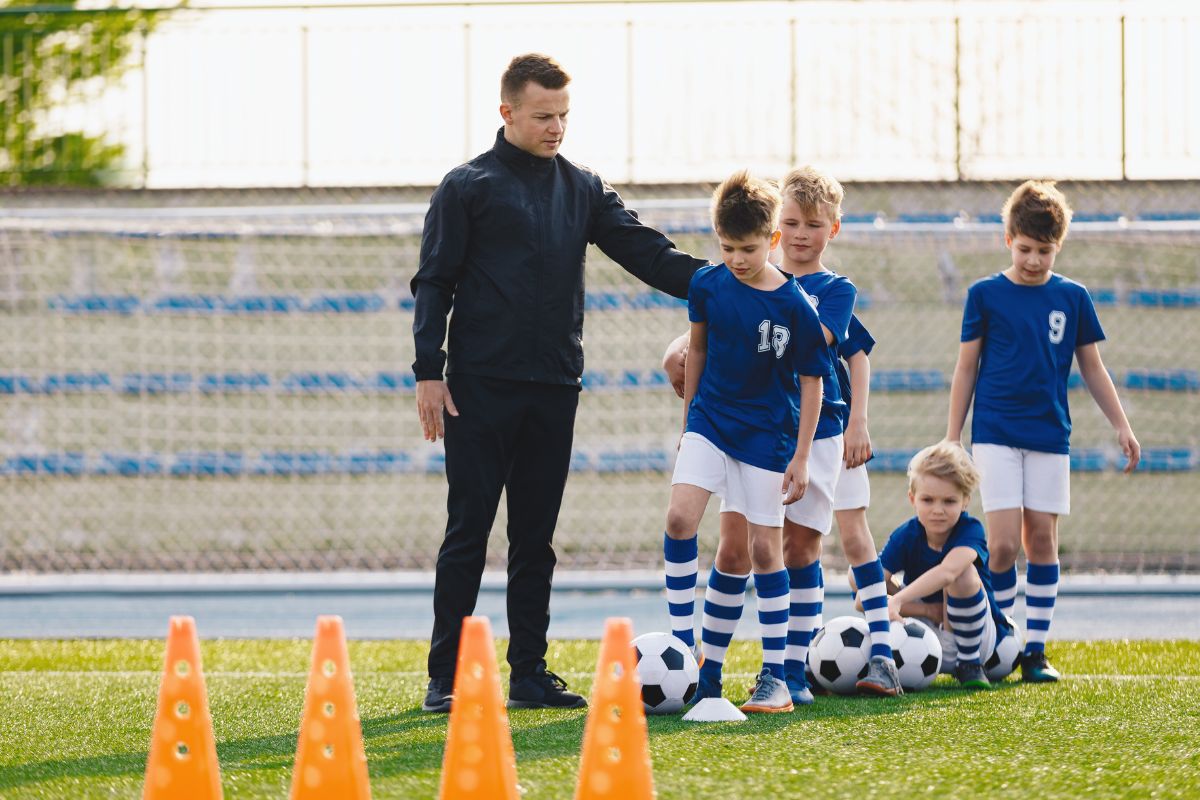
This section looks at how top sports uniform suppliers have transformed teams in high school, college, and professional sports through their products and partnerships.
High School and College Team Transformations
High school and college sports teams often need help finding the right balance between performance and cost for their uniforms. One success story involves a prominent supplier aiding a high school football team in Texas. This supplier introduced lightweight, moisture-wicking fabrics that significantly improved the players’ comfort and performance during games. The team saw a marked improvement in their on-field stamina and overall performance metrics.
In another instance, a college basketball program in California partnered with a leading uniform supplier to update their outdated gear. By adopting advanced materials and tailored fits, the team not only felt more confident but also experienced fewer injuries related to poor uniform design. These enhancements contributed to a winning season and boosted the school’s reputation in collegiate sports.
Professional Teams and Brand Partnerships
Professional sports teams often collaborate with top suppliers to ensure their athletes have the best possible gear. One notable example is the partnership between Adidas and top European soccer clubs. Adidas provided cutting-edge uniforms featuring ClimaCool technology, which regulates body temperature and wicks sweat away efficiently. This partnership helped players maintain optimal performance even in grueling matches.
Another example is the NBA’s collaboration with Nike. By incorporating innovative design elements and leveraging sustainable materials, Nike developed jerseys that were both eco-friendly and performance-enhancing. These uniforms received praise for their comfort and durability, solidifying Nike’s role as a key player in the sports apparel industry. The partnership also extended to fan merchandise, increasing brand loyalty and market reach.
Getting Started with Your Supplier
Finding the best sports uniform supplier involves understanding their order process, customization options, and sign-up procedures. Each step is essential to ensure a smooth and efficient partnership.
Order Process
To begin, you need to understand the order process. Most suppliers will offer an initial consultation to discuss your needs. After agreeing on details like quantities, sizes, and colors, you’ll usually receive a quote.
Once you approve the quote, the supplier will typically send a sample of the uniform for your review. This step ensures that the materials and designs meet your expectations. Only after your approval will the bulk production start. Make sure to ask about delivery times and payment terms upfront to avoid surprises.
Many suppliers also use online ordering systems, allowing you to monitor the progress of your order. If they offer tracking, you’ll be able to see real-time updates on production and shipping statuses.
Customization Options
Customization options are a key aspect when choosing a supplier. Most suppliers offer a range of customization, including logos, names, numbers, and other graphics. You should inquire about the different methods available, such as embroidery, screen printing, or sublimation.
It’s important to check if the supplier offers a design team to help create your ideal uniforms. Some suppliers provide online tools or platforms where you can design and see a mock-up of the uniforms before finalizing the order.
Be sure to ask about additional customization options like fabric choices, cuts, and fits. Knowing these options will help you create a uniform that not only looks good but also meets the functional needs of your team.
Sign Up Procedures
Starting your partnership typically requires a sign-up procedure. This can be as simple as creating an account on the supplier’s website or could involve filling out detailed forms about your business or team.
During sign-up, you’ll likely need to provide details such as contact information, team sizes, and specific requirements. Some suppliers offer incentives for new customers, such as discounts or free samples, so be sure to inquire about any promotions.
Additionally, establishing a clear line of communication with a dedicated account manager can be beneficial. This person will serve as your primary contact for orders, issues, and future needs, ensuring consistent and personalized service.
Building Team Spirit and Fan Support
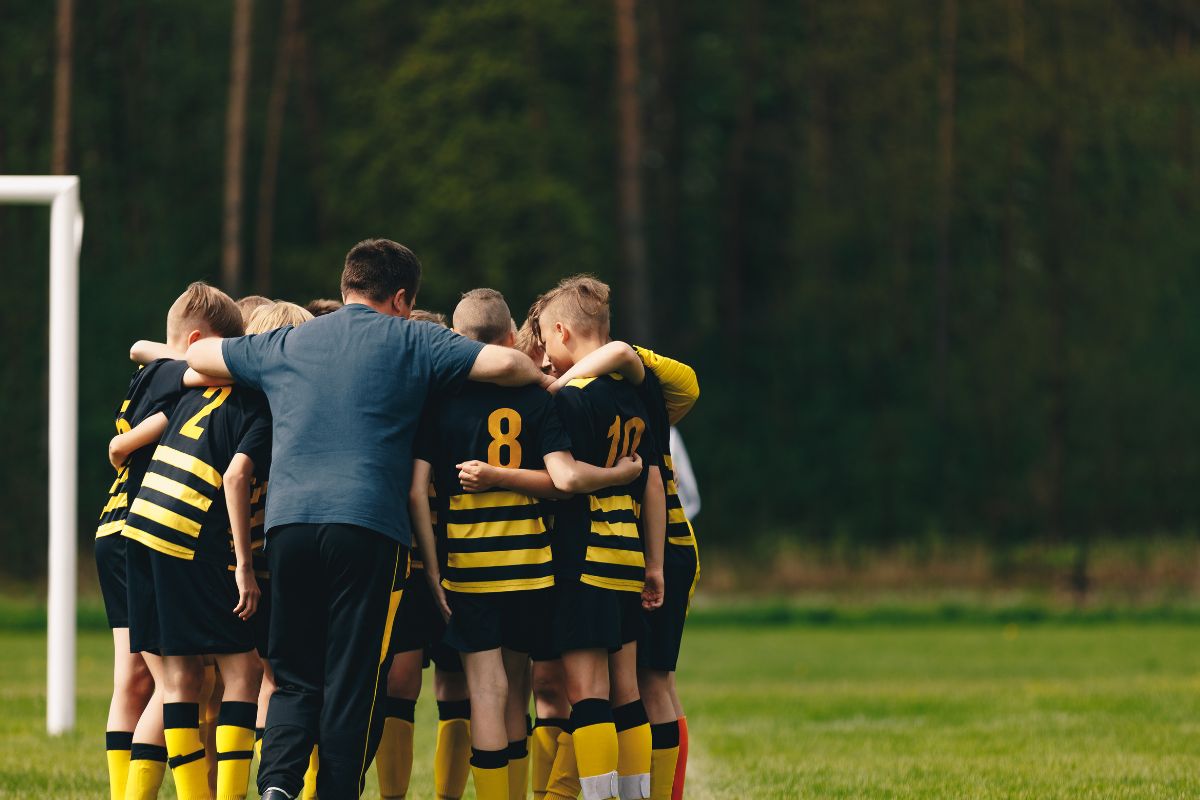
To enhance team spirit and support from fans, focus on crucial elements such as game day essentials and strategies for promoting team spirit.
Game Day Essentials
Game day is a prime opportunity to boost team spirit. Ensure you have well-designed team sports uniforms for both players and fans. Quality and consistency matter, as these uniforms symbolize unity and pride. They should be comfortable, durable, and visually appealing.
Beyond uniforms, consider accessories like scarves, hats, or face paint. These small additions can make a huge difference in fan involvement. Offer these items at various price points to accommodate all budgets. Merchandise should be readily available online and at the venue, ensuring everyone has the chance to support the team.
Providing a memorable fan experience is also important. Engage fans with activities such as pre-game events, halftime shows, and interactive booths. These extras make game day special and encourage fans to return.
Promoting Team Spirit Among Fans
Winning over fans goes beyond game day items. Create a strong online presence through social media and a dedicated team website. Share behind-the-scenes videos, player interviews, and fan stories to build a sense of community.
Organize fan events like meet-and-greets, autograph signings, and fan club gatherings. These interactions make fans feel valued and part of the team family. Encourage fans to share their experiences on social media to spread team spirit further.
Consider loyalty programs that reward frequent attendees with exclusive merchandise or discounts. Offer special perks for long-time fans to show appreciation. Engaging fans in this way not only boosts support but also fosters long-term loyalty.
Specialized Uniforms
Specialized uniforms cater to the unique needs of specific activities like dance and band performances. These uniforms are designed to enhance performance and ensure comfort and flexibility.
Dance and Band Apparel
Dance apparel requires flexibility and durability to allow for a wide range of movements. Materials like spandex and lycra are commonly used because they stretch easily and return to their original shape. Dance uniforms often include leggings, leotards, and fitted tops. They must also handle frequent washing and resist wear and tear.
Band uniforms, on the other hand, need to look sharp and professional while allowing for ease of movement during performances. These uniforms often involve intricate designs, braiding, and accessories like hats and gloves. Comfort is essential because band members might wear them for long hours during parades or performances.
Unique Requirements for Niche Sports
Niche sports like gymnastics, fencing, or figure skating have very specific uniform needs. Gymnastics uniforms must fit snugly to allow for acrobatic moves and need to be made from stretchable, breathable fabrics. They also often include embellishments like sequins or rhinestones.
Fencing uniforms require protection and durability. They must include padding in key areas to protect against hits. The material must be strong but not restrict movement. Figure skating uniforms blend the need for warmth with the flexibility required for complex movements. They also focus on aesthetics for performance routines, often featuring elaborate designs.
Uniforms for niche sports aren’t just about looks; they must meet the strict performance and safety standards of that sport. Meeting these unique requirements ensures athletes can perform their best while looking the part.
The Future of Sports Uniforms
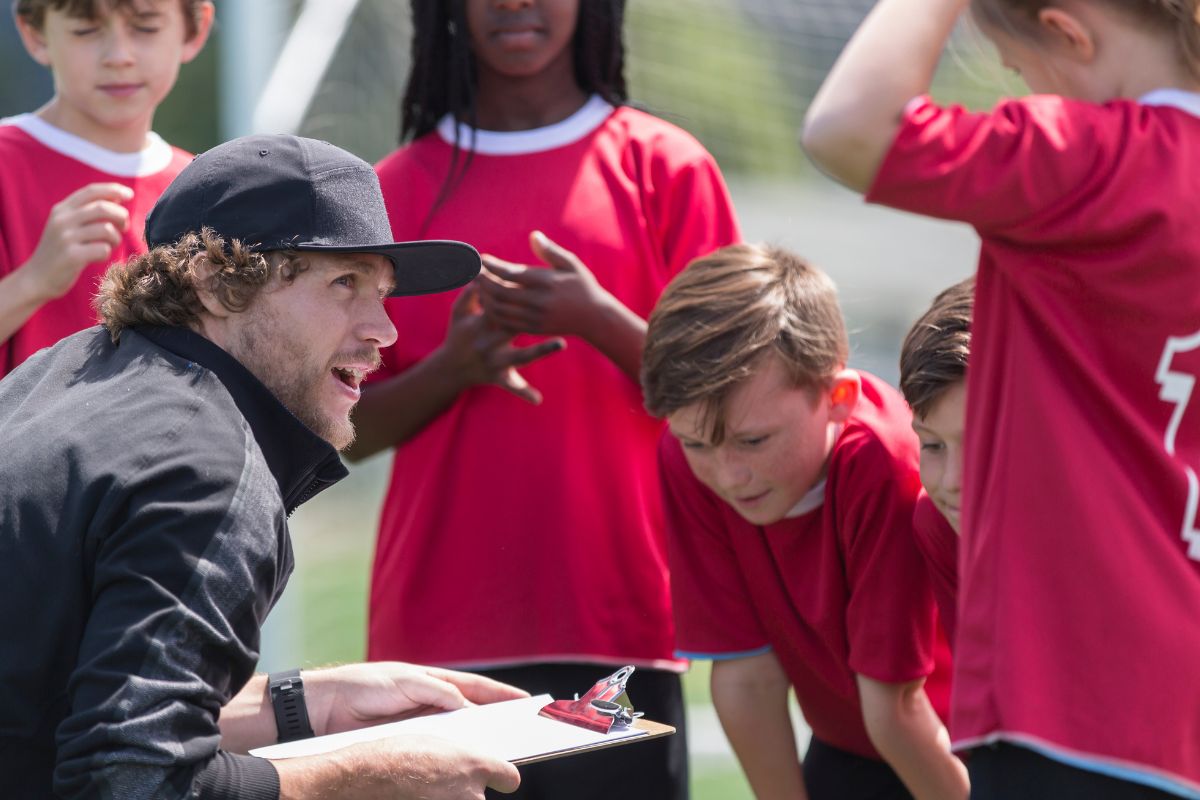
The future of sports uniforms is set to be shaped by cutting-edge technologies and a strong emphasis on sustainability. Innovations and ethical production practices will redefine how athletic wear is designed and manufactured.
Innovations in Apparel
Advanced textiles and smart fabrics are revolutionizing sports uniforms. These materials can regulate body temperature, wick away moisture, and even monitor physical performance. For example, some uniforms now include embedded sensors that track heart rate and muscle activity.
3D printing technology is also making waves. It allows for custom-fit uniforms tailored to each athlete’s body shape, enhancing comfort and performance. Nanotechnology is another exciting development, providing fabrics with antimicrobial properties and increased durability.
Virtual try-ons are becoming more common. This technology lets teams design and try on uniforms digitally before committing to a purchase, ensuring the best fit and style. These advancements are not just futuristic; they are being implemented by forward-thinking suppliers today.
Sustainable Practices and Ethical Manufacturing
Sustainability is a key focus in the future of sports uniforms. Suppliers are increasingly using recycled and eco-friendly materials. For instance, some uniforms are now made from recycled polyester, reducing plastic waste and lowering the carbon footprint.
Manufacturing practices are also shifting towards more ethical standards. Companies are focusing on fair labor practices and reducing environmental impact. This trend is evident in initiatives like sourcing materials locally and minimizing water usage in production.
Efforts are being made to ensure transparency in the supply chain. Brands committed to sustainability are providing detailed information about the origin of their materials and the conditions in their factories. The goal is to create uniforms that are not only high-performing but also environmentally responsible and ethically made.
Frequently Asked Questions
When choosing a sports uniform supplier, it’s important to consider reliability, custom design options, fabric quality, and whether you can purchase directly from the manufacturer.
How to choose a reliable sports uniform supplier?
To choose a reliable supplier, look for customer reviews and testimonials. A good supplier should have a strong track record for delivering high-quality products on time.
What factors should be considered when selecting team uniforms for schools?
When selecting team uniforms for schools, consider durability, comfort, and compliance with school colors and logos. It’s also important to assess the ease of maintenance and fit for different body types.
Which companies offer custom design options for sports uniforms?
Companies like Adidas and Nike often offer custom design options. They allow teams to add logos, player names, and unique color schemes to their uniforms.
Can individuals purchase from wholesale sports uniform suppliers?
Yes, individuals can purchase from wholesale suppliers. However, some suppliers may have minimum order requirements. It’s best to inquire directly with the supplier for purchasing options.
What are the benefits of purchasing sports uniforms directly from the manufacturer?
Purchasing directly from the manufacturer can lead to cost savings. It can also ensure better quality control and a more straightforward process for customizations.
How does the quality of fabrics affect the performance and durability of sports uniforms?
Fabrics with high breathability and moisture-wicking properties enhance player comfort. Durable fabrics also withstand rough usage and frequent washing, extending the life of the uniforms.

